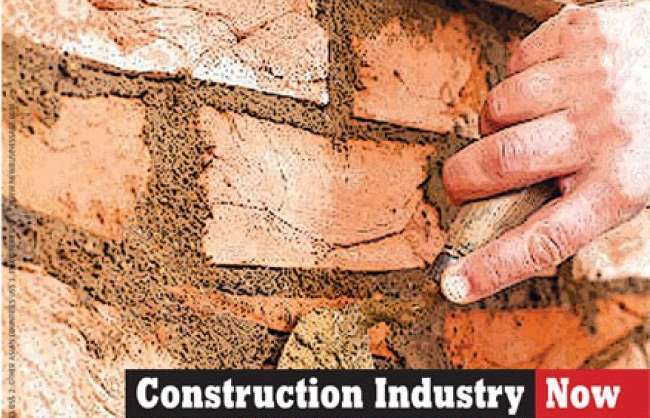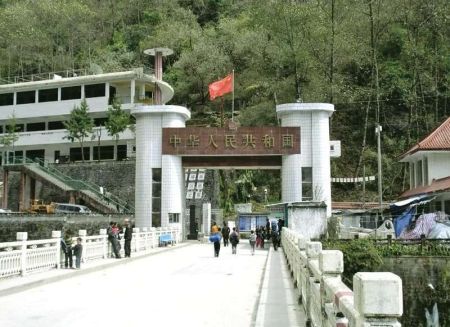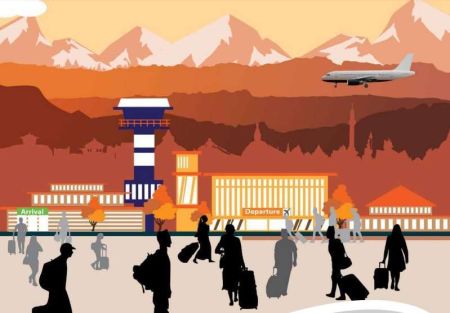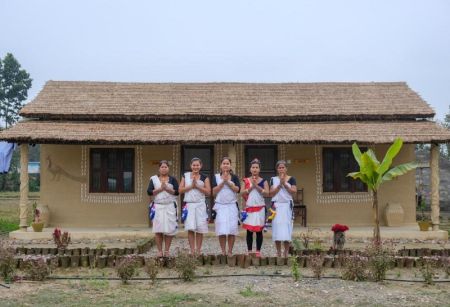.jpg)
As Nepal gears up for the reconstruction phase post earthquake, experts anticipate a healthy growth for the country’s construction industry.
--By Akhilesh Tripathi
The destruction caused by the massive earthquake of April 25 and the powerful aftershocks is immense. However, according to economists as well as industrialists, this destruction, though unfortunate, has created a huge opportunity for the country’s construction industry to grow.
Of course, this observation comes with a caveat. The next few years, according to the private sector head honchos, could turn into a golden age for the construction industry only if the country can start and expedite the reconstruction process in a systematic and proper manner.
“The damage has been assessed now. The country is going to need nearly Rs 670 billion for reconstruction. A huge chunk of this money to be spent is expected to go to the construction industry,” says Pashupati Murarka, acting president of the Federation of Nepalese Chambers of Commerce and Industry (FNCCI).
Agrees economist and former finance secretary Rameshwor Khanal. “More than 700,000 houses have been damaged either fully or partially. World heritage sites and other physical infrastructure such as roads have been damaged too. All these will have to be rebuilt,” he says, pointing out that cement, iron and steel, brick, paints and furniture industries, to name a few, are going to benefit greatly from the reconstruction.
Predicted Rise in Demand
According to construction industry insiders, the annual demand for construction materials such as cement, bricks, iron rods, galvanized sheets, paints etc is more than likely to see an increase of 30 to 40 percent for the next few years. This means, the manufacturers of construction materials are going to see a good growth in their business.
“Reconstruction work will not start immediately as the aftershocks are still coming. People are going to wait till they stop to start rebuilding their damaged houses. So, it’s fair to assume that the demand for construction materials will start rising, especially after the first quarter of the new fiscal year which will start from mid-July,” says Dhruba Thapa, President of Nepal Cement Manufacturers’ Association.
Thapa further added that the country is almost self-reliant in nearly all construction materials and that the existing industries are in a position to meet the increased demand.
“The current annual demand for cement, for example, is around 4 million metric tonnes of which nearly 3.2 million metric tonnes is supplied by the domestic factories while the rest is imported,” said Thapa.
The predicted figures for the country’s cement industry certainly do look bright, with experts estimating annual cement demand to rise to over 500 million metric tonnes per year for the next few years.
There are around 45 cement factories in Nepal, with a total annual production capacity of more than 6.5 million metric tonnes. However, they haven’t been able to utilize their full production capacity mainly because of electricity shortage.
Recently, Nigerian multinational Dangote announced to invest Rs 55 billion in Nepal’s cement industry. The company plans to make its first cement plant operational by the end of 2017.
.jpg)
A considerable level of growth is expected in the demand for iron rods and steel, brick, paint and furniture as well.
“Considering the tremendous progress and development that other quake-hit countries have made during their post-quake reconstruction period, hopefully there will be growth here too,” says Shahil Agrawal, Vice-president of Nepal Steel and Iron Rolling Mills Association, the umbrella organisation of rebar, corrugated iron and wire factories.
If the government’s policies are right, Nepal has a bright and attractive future ahead, adds Agrawal.
There are more than 30 iron rod and steel manufacturing factories registered with the Department of Industry. Of them, only about 20 are said to be operating at present, producing just over 300,000 metric tonnes of iron and steel bars per year.
Agrawal is confident that Nepali manufacturers are capable to meet the predicted increase in demand. “We don’t need to worry about the rise in demand. We will be able to produce as much as the market demands,” he says.
Paint manufacturers, too, are optimistic. According to them, next fiscal year’s annual growth rate of the paint industry is likely to double the present growth rate of around 14-15 percent. “In the next fiscal year, maybe from the second quarter onwards, the growth rate of the paint industry will double this fiscal year’s growth rate,” expects Satya Prakash, country head of Kansai Nerolac Paints Nepal, one of the leading paint manufacturers in the country.
The annual domestic demand for paint (decorative as well as industrial use) currently stands at around 45,000 metric tonnes, according to industry sources. “Domestic paint manufacturers are in a position to meet the increased demand for paint,” declares Prakash.
It is not just these industries which are looking for a robust growth in the next few years. Brick and furniture too stand to benefit in the long run.
According to Mahendra Bahadur Chitrakar, President of the Federation of Nepal Brick Industries, there are 1500 to 2000 clamp-kiln brick factories and around 850 fixed-chimney brick factories in Nepal. More than 100 chimney factories are in the Kathmandu Valley alone.
But the Federation lacks accurate data on the annual production of bricks in Nepal. “The annual production could be somewhere between 4 to 5 million metric tonnes,” Chitrakar roughly estimates, adding that the brick industry has the capacity to increase production by 20-30 percent, if the demand increases.
The brick industry, too, will grow but the growth, according to Chitrakar, will come somewhat later than the growth for other construction materials.
“Brick demand is expected to increase in the new fiscal year. So, we might have to increase our production in the future. But at present, we have enough bricks in stock to meet the demand,” Chitrakar says confidently.
.jpg)
Furniture makers, though not seen as top most priority, are also talking about how the nuts and bolts of future growth will slide into place. People will be looking to buy new furniture either to replace broken ones, or to furnish their new homes once construction is completed.
“The need for furniture and furnishing will come after completing the reconstruction and rebuilding of destroyed buildings and this will take some time. For the next few months, business may be slow but it will pick up gradually,” says Kavindra Joshi, President of Nepal Furniture and Furnishing Association.
“Furniture is not the first thing that people think about when building houses. But the demand for furniture, too, is going to rise because according to post-quake statistics, nearly 600,000 families have lost their beds, chairs, tables, wardrobes etc,” says Khanal.
Govt’s Spending Capacity
It seems money is not going to be a problem. Nearly Rs 440 billion, out of the Rs 670 billion needed for reconstruction was pledged for the country’s reconstruction at the recently concluded donors’ conference (International Conference on Nepal’s Reconstruction).
But the government’s spending capacity is a matter of worry for construction entrepreneurs as well as economists.
“Private houses will be rebuilt or repaired by individual owners. They will do that. But the public properties damaged by the quake will have to be rebuilt through government spending. We all know Nepal government’s spending capacity has remained poor for the past many years,” says Ram Sharan Deuja, General Secretary of the Federation of Contractors’ Association of Nepal (FCAN).
“The government will have to dramatically increase its spending capacity,” observes senior economist Dr Bishwabher Pyakuryal. For this, he advises, crucial decisions by the government agencies concerned should not be delayed. “Plus, there might be a need to amend some laws such as the Public Procurement Act to expedite the reconstruction process.”

Labour Shortage Likely
The number of people employed in the country’s construction sector is estimated to be above a million. Of them, nearly 250,000 workers are foreigners, mainly from India.
Workers from India have gone back home following the earthquake and industry experts think all of them may not return. The Nepali workers, too, have gone to their villages to rebuild their homes. This could lead to a short supply of labourers which in turn could increase labour costs, according to builders.
“Nepal’s construction industry has been facing the shortage of skilled, semi-skilled as well as unskilled labour for the past some years. The earthquake has only worsened the situation of labour supply,” shares Deuja.
He further informed that FCAN has already requested the government to restrict Nepalis from going to the Gulf countries at least for the next few years. “Also, the government could provide free air tickets to Nepali migrant workers and encourage them to return home and participate in the country’s reconstruction drive,” he says.
According to FCAN, the government should lift the temporary ban on the design approval of buildings imposed after the earthquake at the earliest and also waive the import duty on heavy equipment for some time.
Power Outage: A Common Worry
There is one common factor that could affect the production, and hence the growth, of almost all construction materials except brick – shortage of electricity.
“It would be better if the government could import electricity to meet the construction industry’s power needs,” advises Agrawal.






















